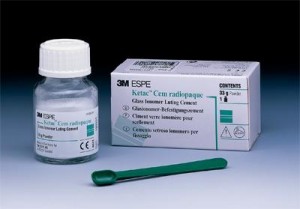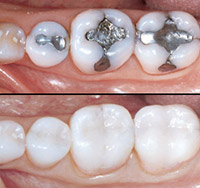Compomers†are recently introduced products marketed as a new class of dental materials. These materials are said to provide the combined benefits of composites (the “comp†in their name) and glass ionomers (“omerâ€). Based on a critical review of the literature, the author argues that “compomers†do not represent a new class of dental materials but are merely a marketing name given to a dental composite. Continue reading
Category Archives: Dental Fillings
Post and core Part 1
A post and core is a dental restoration, which is used to sufficiently restore a tooth morphology followed by future restoration such as a crown, when there is no an adequate part of tooth hard tissue regarding to the required clinical indication of the case, due to loss of tooth structure as a result of decay, fracture or other causes. Post and cores can be referred as one of the foundation restorations. Continue reading
Dental pins
When the teeth are decayed and it has to be restored the dentist goes for the filling but sometimes the decay is extensive and a large part of the tooth is lost. In such cases pins and posts are used as the simple filling material can not give the adequate strength to sustain the masticatory forces and fractures. The pins and posts can be used separately or together as decided by the dentist. Continue reading
Glass Ionomer Cements
INTRODUCTION:
Glass ionomers was introduced by Wilson and Kent in 1972
First commercial aluminosilicate polyacrylate – 1 (ASPA-1) was tested by John Mc Lean.
Dentine Bonding Agents
Dentine Bonding Agents:
These are agents used to aid the adhesion of restorative materials to dentine.
These are dental materials that adhere to tooth structure.
Theoretically, these agents allow more conservative approach to cavity preparation since reliance on a traditional restorative feature is reduced (Grooves and Slots)
What is Composite/Tooth Coloured Filling Material?
Definition
By Anusavice
Composite – in material science, a solid formed from two or more distinct phases (e.g. particles in a metal phase) that have been combined to produce properties superior to or intermediate to those of the individual constituents
Dental composite is defined as a highly cross-linked polymeric material reinforced by a dispersion of amorphous silica, glass, crystalline, or organic resin filler particles and/or short fibers bonded to the matrix by a coupling agent
What is Gold Foil In Dentistry? Part 2
Advantages of Piece method of annealing
No wastage
Choice of selecting correct size
The eliminations of chance of contamination of gold foil between annealing and use
Are amalgam fillings safe?
What is dental amalgam?
Amalgam is a dental material used for filling. It is made up of a combination of metals, i.e. silver, mercury, tin, copper and small amounts of zinc, indium or palladium. Continue reading
How to Treat Tooth Decay
Treatment for tooth decay varies according to how severe the decay is.
- Brushing and flossing with fluoride toothpaste and/or receiving fluoride treatments may be enough to reverse early decay, before cavities have formed.
- You need a filling if a cavity has formed. A filling is a material that plugs the cavity hole and restores a tooth to its original shape after your dentist has removed the decay. Continue reading
How to Recover a Swallowed Dental Crown
Dental crowns are not only necessary for a beautiful smile, if they are on a back tooth they provide a surface with which to chew food. Dental crowns are expensive. There are two types of crowns, temporary and permanent. Dental patients more often tend to swallow a temporary crown, since the adhesive used to hold it in place is more likely to fail and the crown may be dislodged while chewing a mouthful of food and swallowed before you know it’s missing. Less frequently, this happens with permanent crowns but when it does, you can recover the crown and have it reattached. Dental crowns or restorations may be inhaled or swallowed by the patient during chewing food, sleeping, laughing or yawning or may be during some accident. Patient should be told not to get panic and stay calm if he/she has swallowed a dental crown. Continue reading


